Twitter and English letter frequency count
09 Mar 2013
Recently, Peter Norvig, using Google book Ngrams computed frequency of English letters. As letter frequency varies across authors and subject — an essay about a xanthochroid zebra in Qatar, for example, would have rather different distribution — I was interested to see the distribution in Twitter which, as a medium, has distinctive characteristics.
Tweets being limited to 140 characters only, definitely have a bias towards smaller words comparing to Google book data that Norvig used. But, given that orthography of Twitter is quite different, how much of an effect that would have on bigram and unigram frequency? In particular, I wanted to see if the letter frequency in tweets differs from etaoin shrdlu.
So, I grabbed the twitter corpus used by Cross Project for first story detection (thanks, Myle!). The corpus contains around 50 million English tweets collected from beginning of July 2011 until Mid-September 2011. You can grab the corpus from here. Due to ToS from Twitter, they distribute the corpus as a set of tweet IDs which you need to crawl by yourself.
Similar to Norvig, I discarded any entry that contains letter other than a-z. So, user mentions with @ gets removed along with words containing punctuation marks. After the pre-processing, the dataset contains 41,669,244 tweets, 366,265,866 words and 1,812,288,895 characters. All the words are converted to lowercase.
Of these tokens, the longest one is 137 characters long:
kkkkkkkkkkkkkkkkkkkkkkkkkkkkkkkkkkkkkkkkkkkkkkk kkkkkkkkkkkkkkkkkkkkkkkkkkkkkkkkkkkkkkkkkkkkkkk kkkkkkkkkkkkkkkkkkkkkkkkkkkkkkkkkkkkkkkkkkk
This token appeared twice in the dataset. Sigh.
The next longest ones are 136 characters long:
sleeeeeeeeeeeeeeeeeeeeeeeeeeeeeeeeeeeeeeeeeeeee eeeeeeeeeeeeeeeeeeeeeeeeeeeeeeeeeeeeeeeeeeeeeee eeeeeeeeeeeeeeeeeeeeeeeeeeeeeeeeeeeeeeping
And,
goooooooooooooooooooooooooooooooooooooooooooooo ooooooooooooooooooooooooooooooooooooooooooooooo oooooooooooooooooooooooooooooooooooooooool
For this analysis, I only retain tokens that have been mentioned at least 5000 times — resulting in 4565 unique ones. The longest tokens from the selected set are more familiar ones:
| Token | Frequency |
|---|---|
| international | 24321 |
| relationships | 17383 |
| congratulations | 13883 |
| entertainment | 10395 |
| automatically | 7876 |
| understanding | 7241 |
| unfortunately | 7075 |
| conversations | 6996 |
| opportunities | 5242 |
Limiting to at least 5000 mentions results in 327,767,619 tokens and 1,194,137,386 letters in total. The letter frequency looks like this:
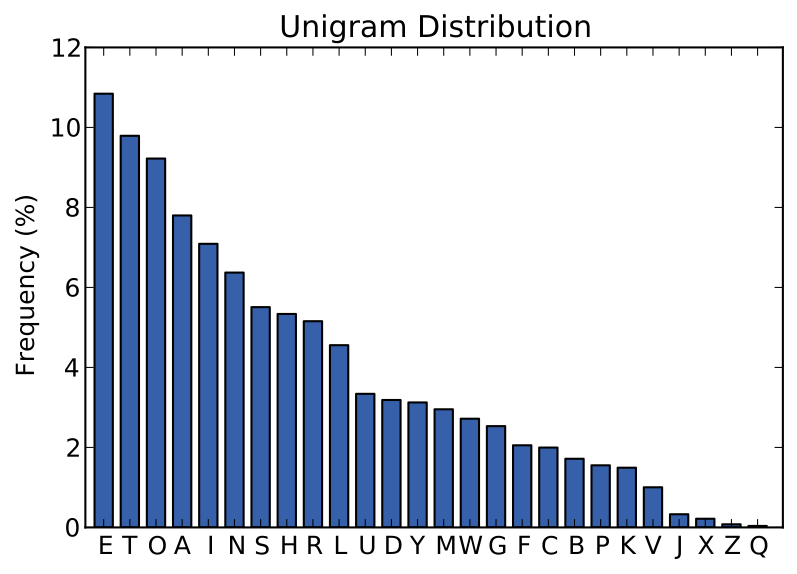
So, the ranking of letter frequency is etoain shrlud — the pair o,a
exchanges position and lud becomes dlu comparing to the the order of
frequency used by typesetters — etaoin shrdlu.
More interestingly, in contrast to Norvig’s finding, the letters o, y and u all
move up in ranking. I think this is due to the increased use of second person
pronouns — you, u and your — comparing to the book data he used.
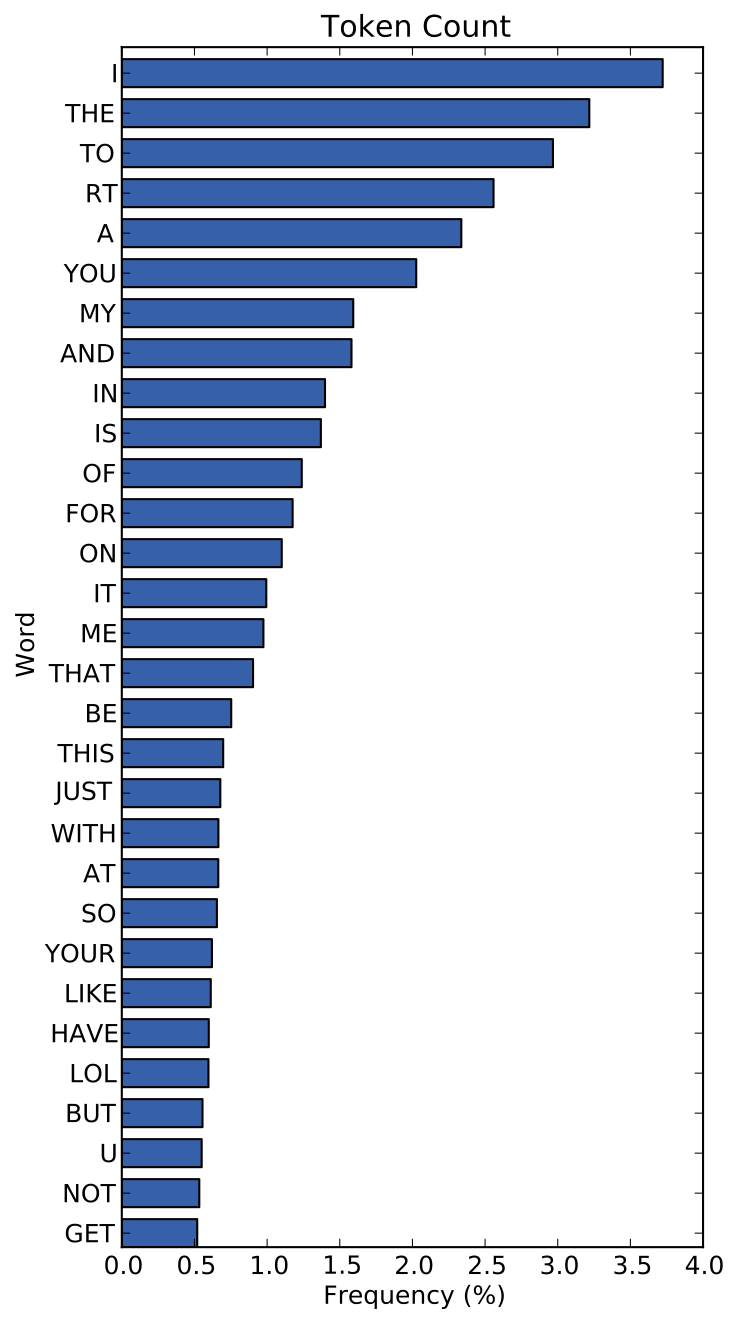
From the distribution of word count, the word you, your and u all are included
in top-20 word list from Twitter corpus while in book data only you make it to
top-50 — placed in 32nd position.
More interestingly, the top word is not the, but i. This was a bit surprising
for me. But, on second thought, this probably shows that as the early Twitter
tagline — ‘What are you doing?’ — asked, Twitter is still mainly used
for personal status service. Though, I thought, the subject would be implied
in most of the these personal updates.
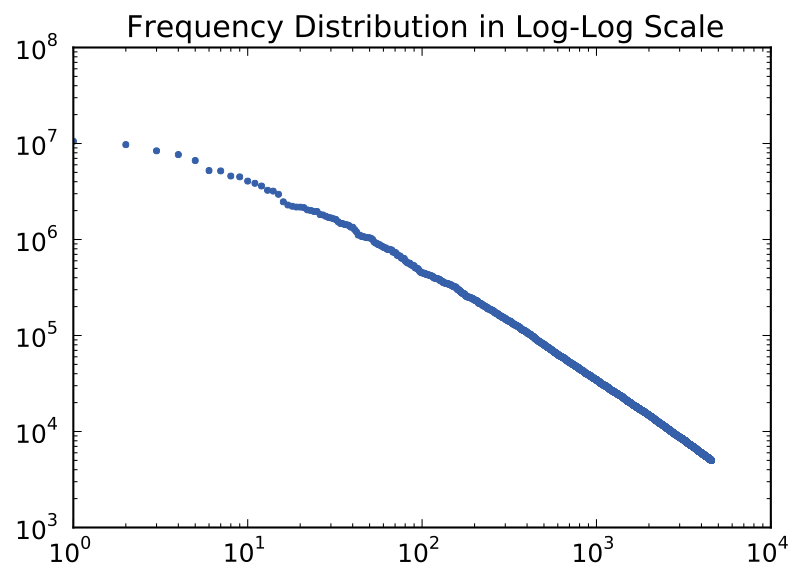
The frequency distribution seems to follow Zipf’s law — as the line in log-log scale plotting shows.
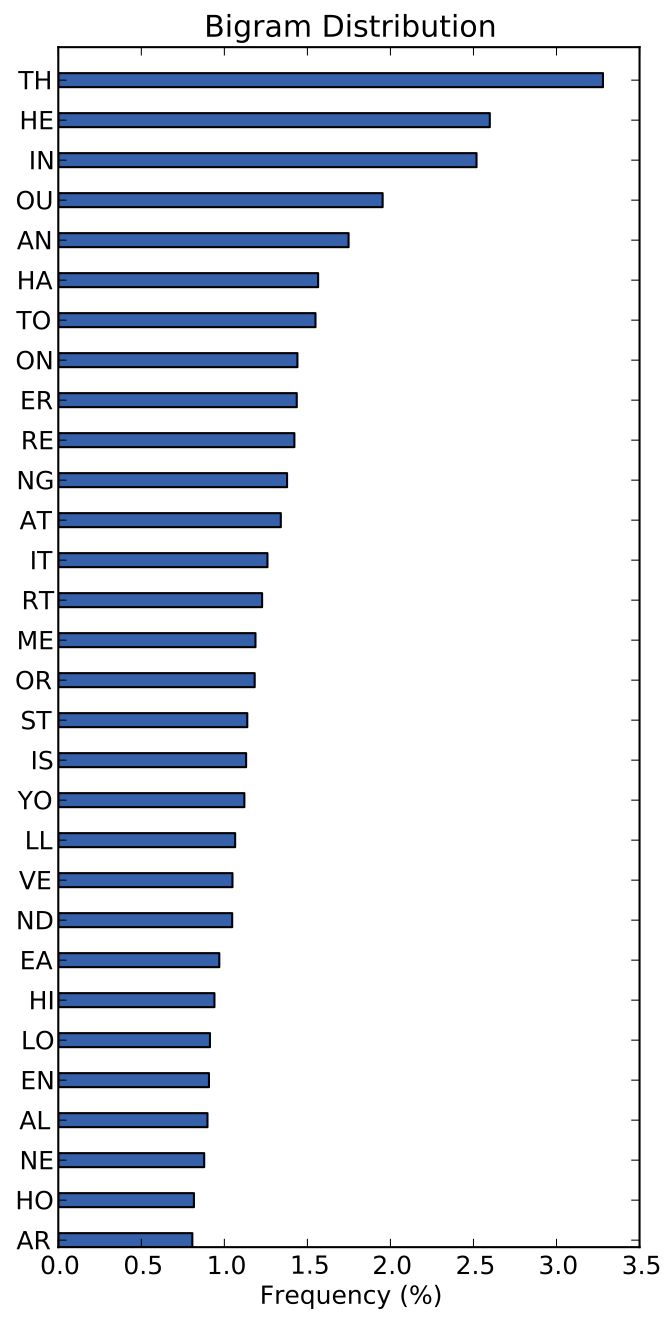
The bigram distribution is noticeably different from the book data. For example, ou
is ranked 4th in Twitter corpus while being in 28th position in Norvig’s list. But,
for most of such ranking changes, I can’t come up with any plausible explanation.
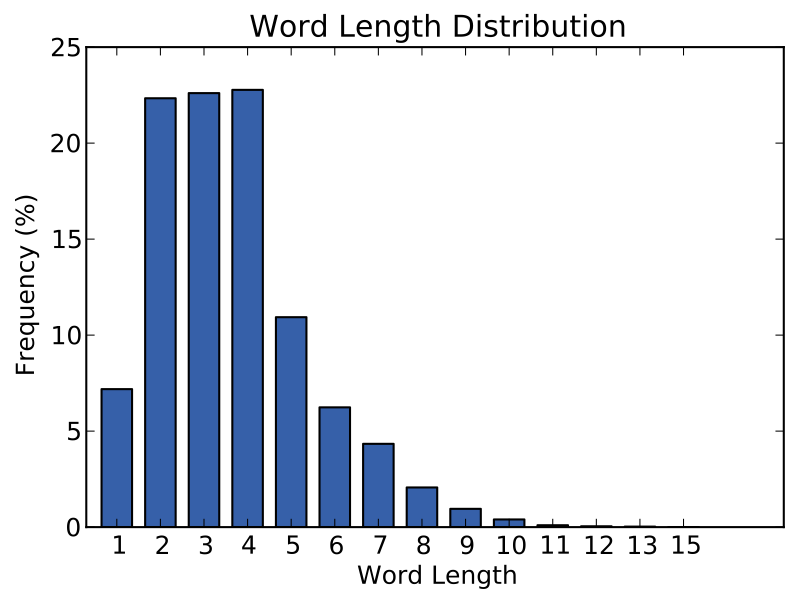
The word length distribution clearly points out the preference for shorter words in Twitter corpus. The average length of word is 3.64 — while the average length of word in book data is 4.79. In Twitter corpus, words having length 2 to 6 counts for 78% of all the dataset.
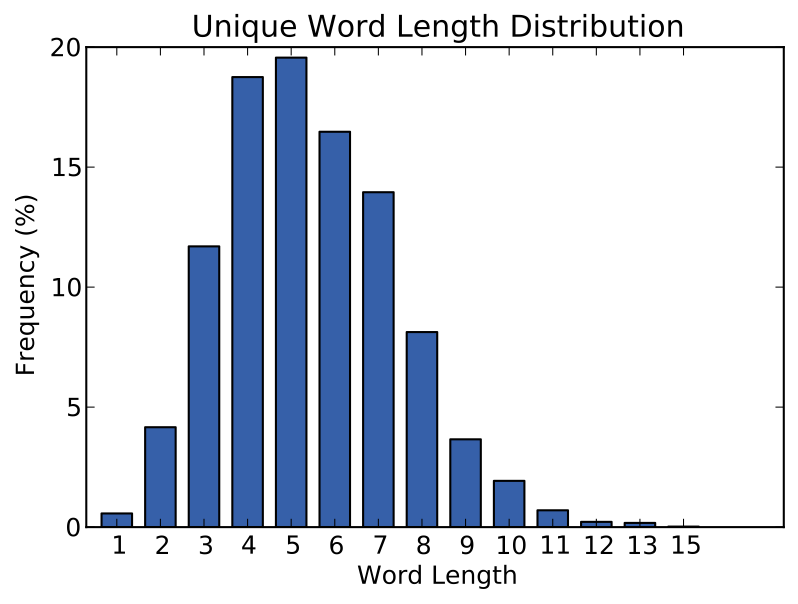
Similarly, the unique word length distribution also is biased towards shorter words. The average word length here is 6.161 and 80% of these words are 3 to 8 characters long.
So, while the distribution of letters is not drastically different in Twitter, as we move from letters to words, there are subtleties that I think reflect the distinctive nature of Twitter — both in how and what people communicate there. I would love to see the result of same experiment done on Facebook status updates.